|
(Editor’s Note: This continues SETMA’s Response to RWJF and addresses SETMA’s performance, tracking and auditing of Preventive Care issues related to the ambulatory delivery of healthcare. The request for information had five sections. The first was how SETMA approaches preventive health care as a team.)
SETMA’s Preventive Care Program involves the following:
- Traditional preventive care such as cancer screening (breast, cervical, prostate, colon)
- Diabetes prevention and diabetes screening
- HIV screening for all patients between 13 & 64 years of age
- Hypertension Prevention
- Tobacco prevention
- Obesity prevention
- Sedentary life style
- Immunizations (flu, pneumovax, tetanus/diphtheria/acellularpetrussis)
- Glaucoma Screening
- Renal Disease Screening
The first step in this preventive program is the following template which address almost all preventive and screening studies done. The first thing the nurse does after completing the patient’s weight, blood pressure, body fat, etc., is to open the Pre-Visit/preventive Screening template. The measures which apply to the patient and have been done will appear in black. The measures which apply to the patient and have not been done will appear in red and the measures which do not apply to this patient will be in grey.
Any measures which apply and have not been completed can be fulfilled by clicking the “order” button which appears beside each element. When that button is clicked, three things happen:
- The test or procedure is ordered.
- The charge is sent to billing - but will not be sent to the payer until it has been done.
- The test is placed on the patient’s chart.
- The metric is marked as done.
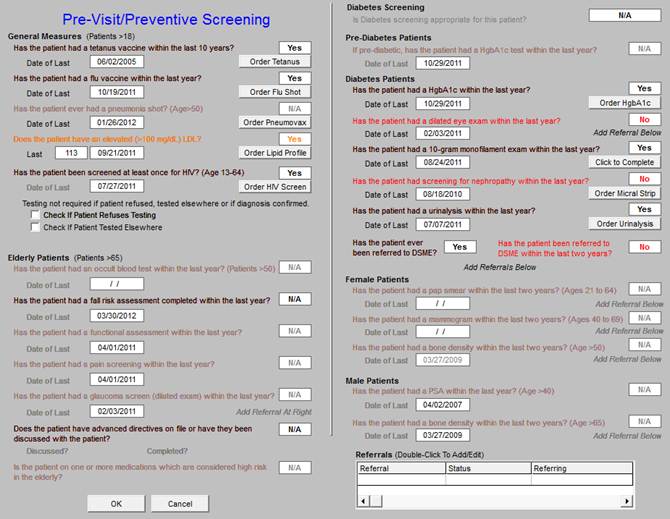
The second thing the nurse does is to complete the LESS Initiative by clicking the following:
- Weight Management - this shows the disease risk of the patient’s weight, the patients BMI, BMR, Body Fat Percent and an explanation of energy metabolism and how to change the BMR.
- Exercise - this explains to the patient how to get started and provides a personalized exercise program including a walking program. It is scaled to the Cooper Aerobic data. If the patient has exercise limits, i.e., CHF, Diabetes, etc., specialized exercise prescriptions can be completed.
- Smoking Cessation - this addresses primary, secondary and tertiary tobacco use and strategies for stopping.
Once this is done, a document is completed which summaries all of the patient’s personal data which is given to the patient. SETMA audits nurse and provider performance on The LESS. There is a laser printer in every examination room and the document is printed and given to the patient at that time.
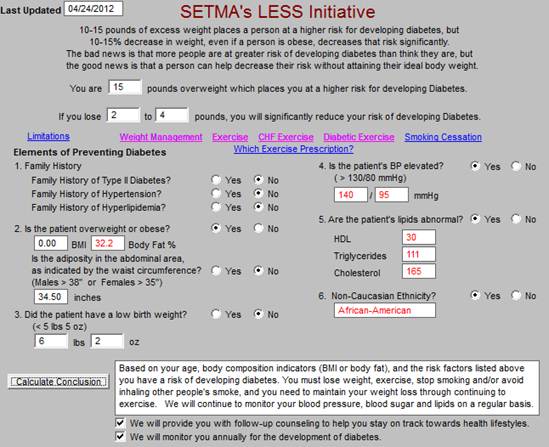
At the time of the Less Initiative being completed the nurse completes the “Screening Recommendations” for diabetes and if the algorithm requires it and the patient is fasting the appropriate screening test is performed. Other tools as seen below are also available for the appropriate patients such as “reducing your risk,” “could you have diabetes and not know it,” “predicting diabetes,” etc. We tell all of our patients who are at risk of developing diabetes, “The best way to treat diabetes is don’t get it.”
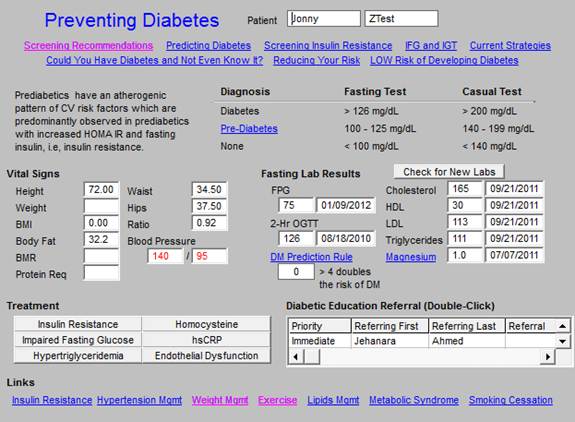
The Preventing Hypertension template is also completed at this time and the materials go on the patients chart. We particularly focus at this point on patients with pre-hypertension.
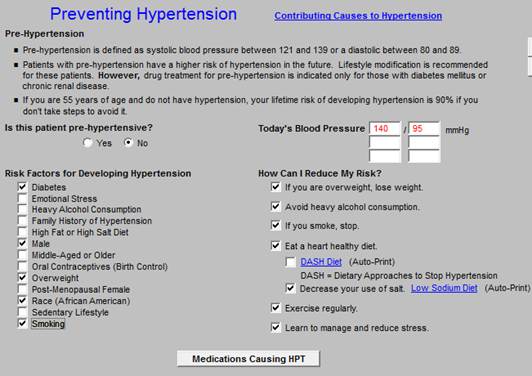
Part of SETMA’s Preventive Health/Wellness Program involves the following questionnaires which are completed once a year on each of our patients. The following his is a link to a tutorial on how to use these materials:
Patient-Centered Medical Home Annual Questionaires
Those questionnaires are found on the front page of our primary care suite of templates.
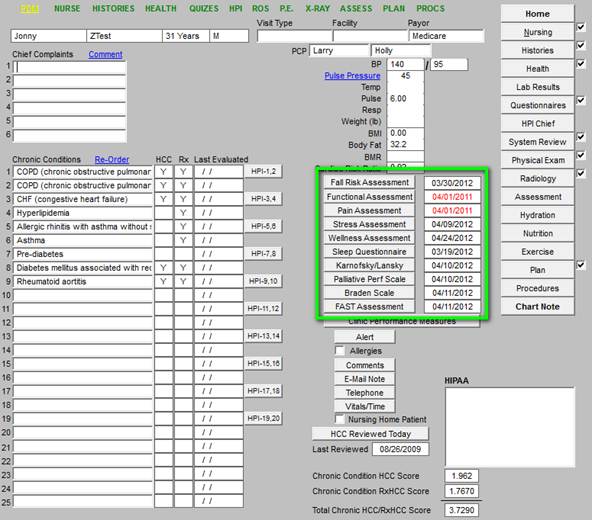
Each of these were addressed in recent Your Life Your Health articles, which can be found at www.jameslhollymd.com:
The following are our audits for preventive services. SETMA Mid County is a brand new clinic and the providers there are new. Their performance will improve quickly. We are only giving you the data for 2011, but on our website under Public Reporting, all of the data for 2009, 2010, 2011 and the first quarter of 2012 are posted. Each month, SETMA’s providers and nurses have a training meeting in which the use of the disease management tools, clinical decision support tools and provider performance audits are reviewed. Opportunities and plans for improvement of our performance on the Triple Aim are discussed.

We have a major effort going forward to decrease the use of potentially high risk medications.
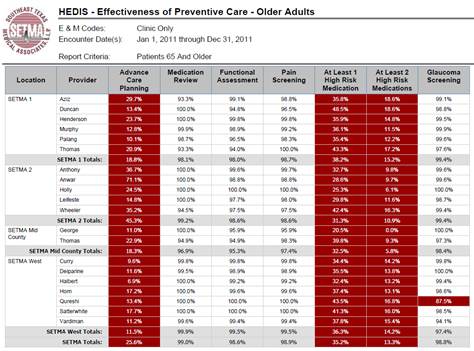
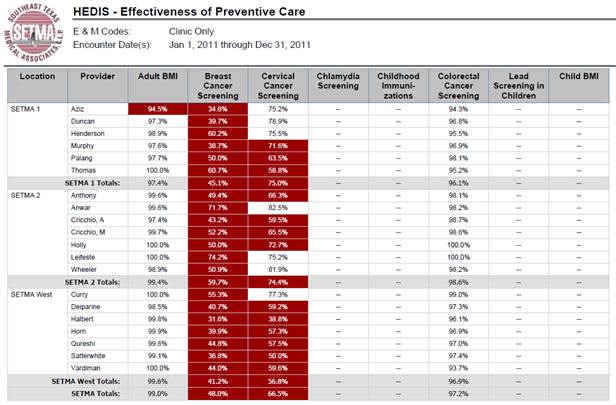
The following are the auditing results for screening of our Medicare Advantage patients which represent 32% of our patients and 50% of our visits. This data is for January-March, 2012
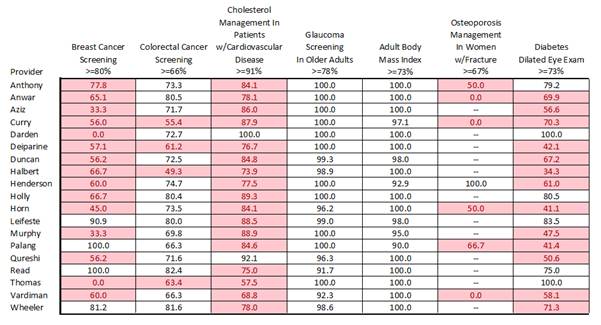
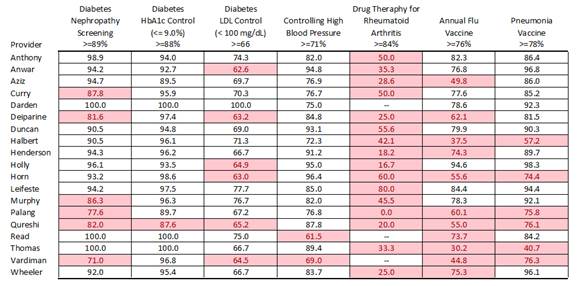

The following is the 2011 audit for performance on the LESS (Lose Weight, Exercise Stop Smoking) Initiative. We consider anything above 95% as being acceptable.
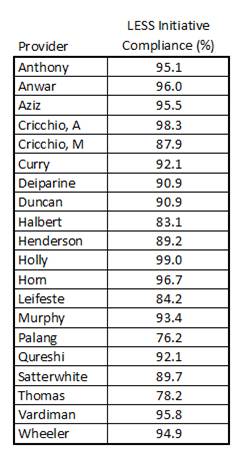
|